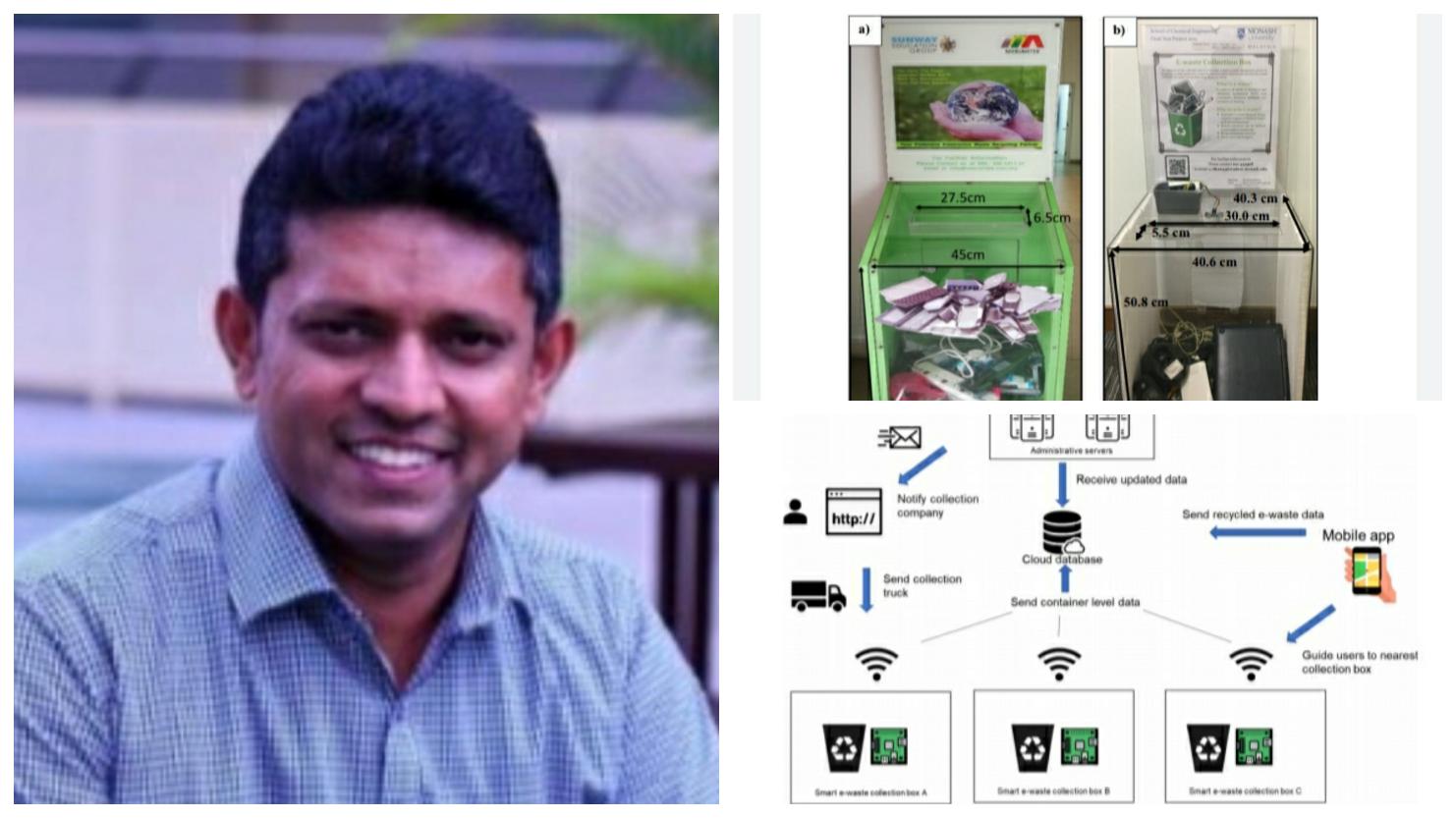Mobile app based electronic waste collection method introduced in Malaysia by Sri Lankan expert

In 2016, the world generated 44.7 million tonnes of e-waste, which is enough material to build 4,500 replicas of the Eiffel Tower, according to World Economic Forum (WEF) estimates, and only 20% is recycled through the appropriate channels with little data on what happens to the rest.
E-waste refers to all types of electrical and electronic equipment and its parts that have been discarded without the intention of reuse, usually when a device reaches the end of its functioning life.
Harnessing science and IoT technology, Monash University Malaysia’s School of Engineering senior lecturer Dr Saman Ilankoon hopes to optimise e-waste recycling, as the bulk of e-waste is discarded into rubbish bins and ends up in landfills or in the hands of illegal, informal recyclers.
Cause and effect
The confluence of different global trends – rapidly advancing technology, rising adoption of information and communication technology (ICT), growing middle-class societies and shorter replacement cycles for e-devices, have resulted in more electronic and electrical products in the market.
When e-waste is improperly disposed of through illegal recycling or dumping, hazardous chemicals and metals contained in them, such as lead, mercury and cadmium, are released into the soil, water or air, with the potential to harm our health and the environment.
What many fail to understand is that e-waste is extremely valuable instead, with WEF estimating it to be valued at US$62.5 billion annually (RM268 billion). This is due to the rare and valuable materials that can be recovered from e-waste such as gold, silver, copper, tin, platinum and palladium.
“In the next 50 to 60 years, we need to produce 60% more natural materials to sustain our current lifestyle, which is equivalent to (the resources of) four planet Earths! This is the resource limitation we have,” he said.
E-waste recycling can help meet that surging demand for natural materials, which is otherwise lost. The WEF points out that there is more gold to be found in 100 tonnes of smartphones than in 100 tonnes of mined gold ore.
Meanwhile, figures by the United States Environmental Protection Agency showed that by recycling one million mobile phones, 34kg of gold, 350kg of silver, 16,000 kg of copper and 15kg of palladium could be recovered.
Without e-waste recycling, natural materials used in electronic and electrical components are lost when products are discarded.
“We are not closing the loop. In a circular economy, we need to ensure the collection of e-waste and recovery of the materials,” Ilankoon said.
Improving efficiency
An expert in mining and minerals engineering, Ilankoon is currently exploring the use of larger coarse particles in the extraction of copper from discarded printed circuit boards (PCBs).
Financed by the Malaysian government under a Fundamental Research Grant Scheme (FRGS) worth RM 77,000 for the next three years, Ilankoon hopes to develop an optimal way of packing the particles for metals extraction, a technique that could potentially impact the industrial sector.
Under his other research project, the Smart E-Waste Collection Box, Ilankoon uses a mobile application to optimise the collection of e-waste materials.
The pilot project, a collaborative effort between Monash University Malaysia’s School of Engineering and Dr Chun Yong Chong from the School of IT, is based on an existing e-waste collection box system initiated by Sunway Education Group and a local recycling company, Meriahtek (M) Sdn Bhd, where discarded e-waste is collected via strategic bins placed at Sunway University and Monash University Malaysia.
With the Smart E-Waste Collection Box, Ilankoon introduced a wider opening slot to accommodate the disposal of electronic devices, as well as the use of a mobile application and ultrasonic sensors to monitor e-waste collection and capture useful collection data.
Better e-waste management
“On one hand, we need more e-waste materials; on the other, we need to extract maximum value from discarded materials. In order to achieve the United Nations’ Sustainable Development Goals, e-waste management is critical,” he said.
While a legislative framework needs to be put in place in Malaysia to govern household waste management, Ilankoon said the government should also look into employing the services of informal recyclers to improve e-waste collection.
“Social responsibility should be the key driving force in driving sustainability. We should conserve our natural environment, water and soil for the betterment of the next generation. Corporations need to be held accountable for what they produce, and people need to understand that e-waste disposal must be done in the right place. We need to be responsible for what we use,” he said. (TheSundaily)